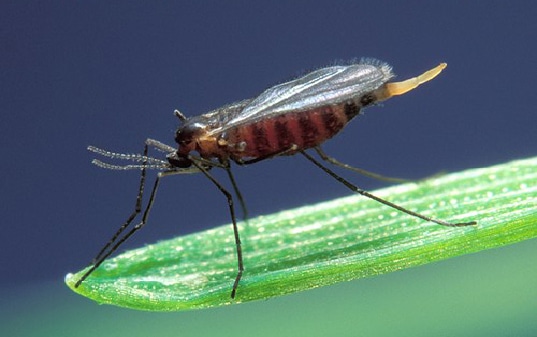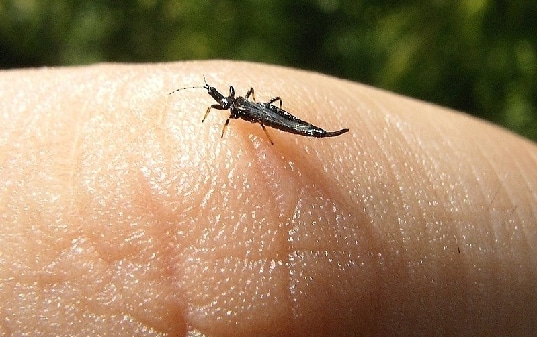Aphids
Small, oval shaped, nearly transparent insects. Commonly found on soybeans but are also a pest in wheat. There can be many different species present so it is important to identify which species you have. Some are vectors of the barley yellow dwarf virus which is very damaging to wheat. By themselves, they do little to no direct damage to the wheat plant. Their feeding habits can cause yellowing of leaves, but their main impact is being a vector for barley yellow dwarf virus and other viruses.


Armyworm
Young armyworm larvae begin a pale green to yellow color and as they mature, they become a darker green with a line developing along the side of their body. Much like their impact in corn, armyworms will defoliate the plant. Leaves will be entirely consumed or have notches eaten out of them. This will impact the plants ability to photosynthesize. For controlling armyworms, chemical methods have and can be used, but the most common method of control is biological control.
Hessian Fly
A dangerous pest when it comes to wheat, the Hessian fly can drastically reduce yields if the pressure is high enough. The Hessian fly is 3-4 mm long with a black head and a pinkish or yellow-brown abdomen. The larvae feed off juices from the plant tissue; affected plants may be stunted, stands may thin & the potential for lodging will also increase. When planting wheat in the fall, be conscience of the Hessian fly free date for area.


Thrips
Thrips are extremely small insects, only about 1 mm in length. They are brown or black with a tapering abdomen and a pair of two narrow wings. Normally, thrips are found on the sheath of a flag leaf and will feed on the stem. If the pressure is heavy enough to cause severe damage, the affected leaves will take on a silvery color. Heavy rain events will destroy the thrip population if present.
Cereal Leaf Beetle
Cereal leaf beetles are 4-5 mm long with a black head and a blue-green wing cover with parallel lines of small dots. The larvae are bright yellow and begin to take on a slimy appearance as they accumulate black fecal residue on their backs. They will overwinter here and emerge in the spring, feeding on the leaves. Leaves will have longitudinal stripes where the beetles have fed. If leaves have fine hairs on them, they are less likely to be affected by cereal leaf beetle feeding.


Slugs
Common slugs can be more impactful in no-till, reduced till and in cover crop situations where their populations have not been disturbed. They will feed on the leaves, chewing longitudinally and leaving a glistening slime trail behind. If underground, they can also feed on the seedling biting it off before it gets a chance to mature. Slug control is difficult. There are baits and some sprays but control may be difficult as slugs are more prevalent at night.